Demolition tanks
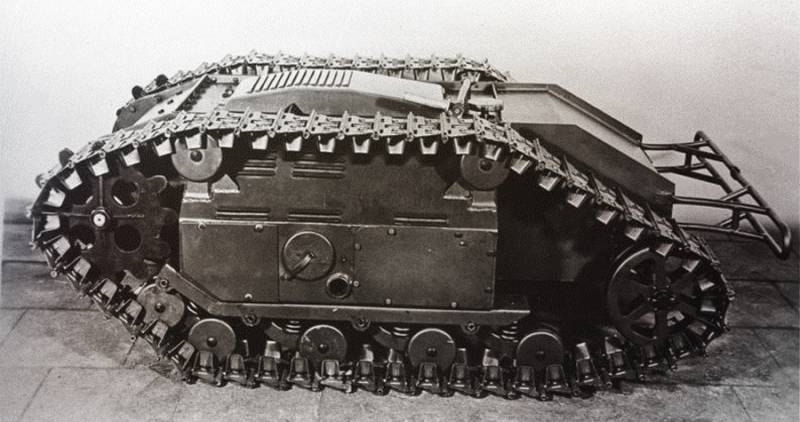
The German tracked torpedo "Goliath" Sd.Kfz.303a is a variant of a vehicle equipped with a gasoline engine. One of the most famous samples of remotely controlled land combat torpedoes
who had armor of fire, hyacinth and sulfur on them;
horses' heads are like lions' heads,
and out of their mouths came fire, smoke, and brimstone.”
Revelation of John the Evangelist, 9: 17
Our tank panopticon. The recent use of armored fire fighting vehicles by the Russian troops in the VO zone has again attracted attention by the fact that, firstly, nothing is new under the moon, and secondly, that the end always determines the means. That is, even everything very old can be used even now, if it is, say, effective, not too labor-intensive and ... inexpensive! And, of course, it is difficult to come up with something so new that has not been invented in the centuries before.
The same ship-fireships who only and when did not use. The Dutch, fighting the Spaniards in the XNUMXth century, completely used a barge as a fire-ship, on which they built something like a brick shed for gunpowder, the charge of which was supposed to be undermined by a clockwork. Why not a modern exploding boat, perhaps only without remote control ?!
The idea of creating remotely controlled self-propelled mines or torpedoes was bribed by the fact that they seemed to require little metal, and they were hardly noticeable on the ground, and their effectiveness (due to manual control) was assumed to be high. In fact, everything turned out to be not so simple with them. However, there were such machines, they fought, and today we will look at them once again by visiting our tank freak show.
A lot of materials were published about remote blasting machines on the pages of VO, both in 2016 and in 2017, but since time has flown away decently since then, it makes sense to return to this topic again, especially in the light of recent events in the zone NWO.
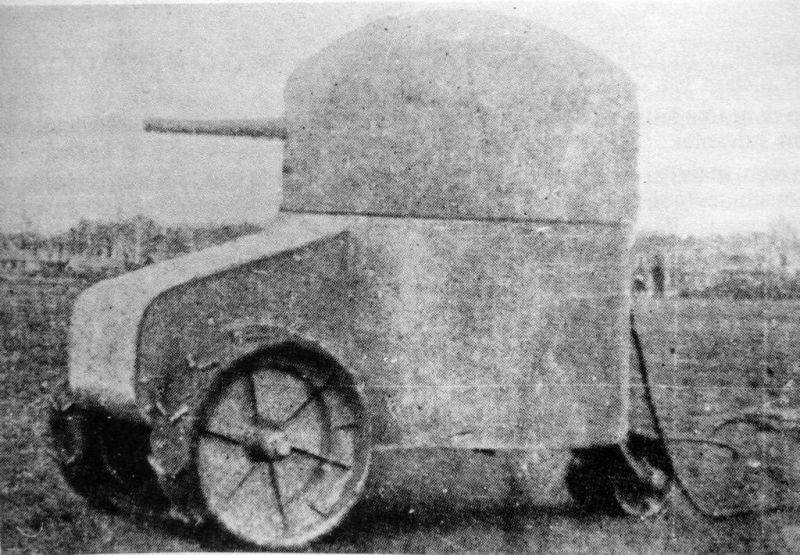
"Fortress" - a combat vehicle powered by Gabet and Obrio. Photo from the book "Dawn of Glory"
It will be necessary to start with the fact that the first attempts to create a remote-controlled blasting machine were made back in 1915 by French engineers Aubriot and Gabet. And at first they offered a tank with an electric motor and power by wire. But when the military rejected it, they removed the turret from it, stuffed the hull with explosives and ... received the Torpile Terrestre ground torpedo.
The "Machine" carried a charge - 200 kg of explosives, which, according to the idea of its authors, it was supposed to deliver to the enemy's field fortifications. That's just any cable break put it out of action, and its patency on wheels across a field dotted with funnels and clogged with stakes with barbed wire stretched between them was completely unsatisfactory.
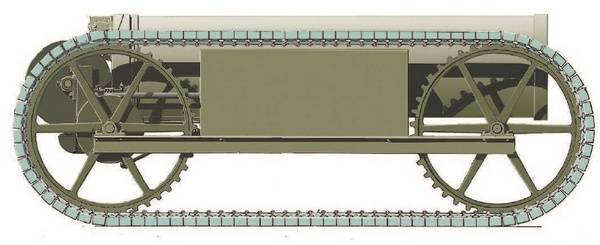
E. I. Wickersham's remotely controlled demolition machine. Its peculiarity was electric motors located in armored boxes inside the caterpillar contours, and a cylindrical housing for a warhead placed between the tracks.
But at the end of the war in the United States, a project appeared for a caterpillar blasting machine driven by two electric motors, called the Wickersham Land Torpedo.
The project belonged to the engineer E. I. Wickersham and, judging by the drawings from the patent documentation, was well developed and was an original and interesting design. But ... the war just ended here, so the U.S. military did not need Wickersham's brainchild.
But in the 30s of the last century, interest in new species weapons the military showed up again, and it’s understandable, because it was going to a new world war, and any weapon was required, if only it killed well!
In France, the initiator of work on remotely controlled land-based torpedoes was the captain of the French army, Jean Pommelle, who was the first to build and test such a "machine". The project of the machine, called VP-38 (fr. Vehicule Pomellet, 1938, that is, “Pomelle Machine”, 1938) was completed in the winter of 1938. There were many complaints about the built model, but it was still recommended to be adopted and mass-produced.
The author of the second pre-war draft of the land torpedo was the well-known designer in France (and not only there) Adolf Kegress, who worked at one of the automotive plants. Being engaged in developments in the field of automotive technology, he proposed several interesting projects, among them the project of a remote-controlled self-propelled explosive charge. The “machine” was built, named Engine K (“Motor Kegressa”) and ... drowned in the Seine when France was occupied by German troops.
But, apparently, not only do manuscripts not burn, but inventions of this nature do not sink. The Germans got Kegress's "machine" from the bottom, studied it and decided that it would not hurt them to acquire something similar. Moreover, the so-called "radio tanks" in the 30s were only discussed in the special literature. Moreover, in the Heigl reference book, popular in those years, for 1937, on page 93, a photograph of the Japanese “small teletank” was placed and it was written that it was intended for clearing anti-tank minefields.
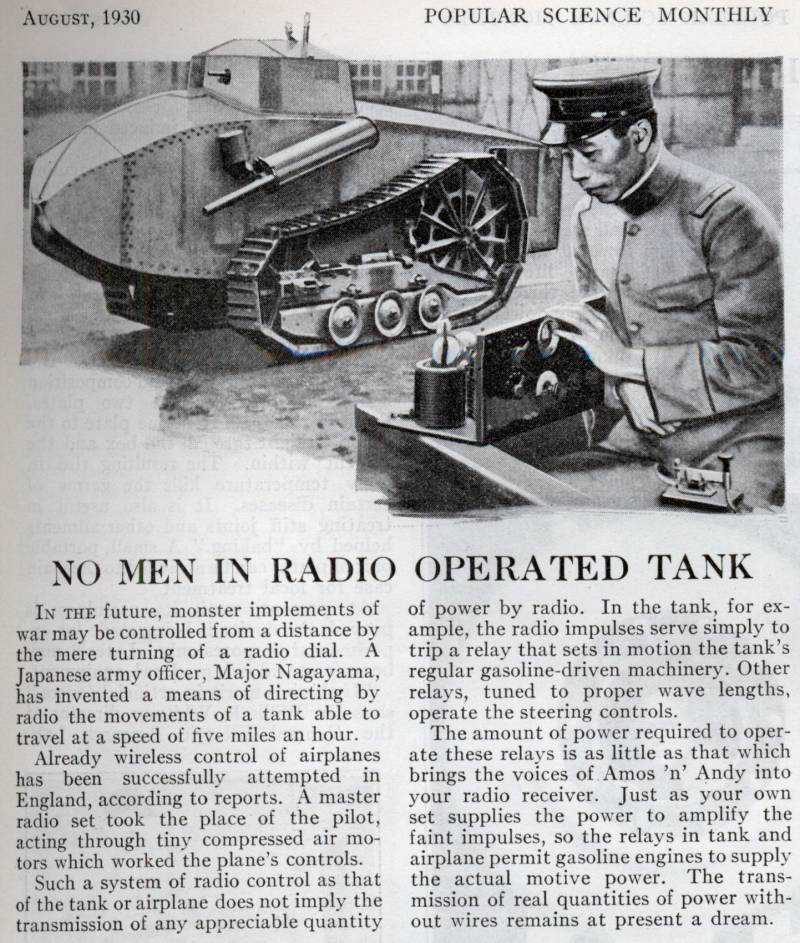
Photo and article in the August 1930 issue of the American Popular Science magazine, dedicated to Major Nagayama's remote-controlled tank
Here is what was written there:
According to reports, successful attempts have already been made in England to control aircraft wirelessly. The pilot's seat was taken by the main radio station, operating through tiny pneumatic motors that powered the aircraft's controls.
Such a radio control system, like that of a tank or aircraft, does not involve the transmission of any appreciable amount of energy by radio. In a tank, for example, the radio pulses simply serve to trigger a relay that drives the tank's normal gasoline-powered machinery. Other relays, set to the appropriate wavelength, control the steering. The amount of power needed to operate these relays is as small as what transmits voices... to your radio.
Just as your own setup provides the power to amplify weak pulses, so relays in tanks and aircraft allow gasoline engines to provide real propulsion. Transmitting real amounts of power without wires is currently a dream.”
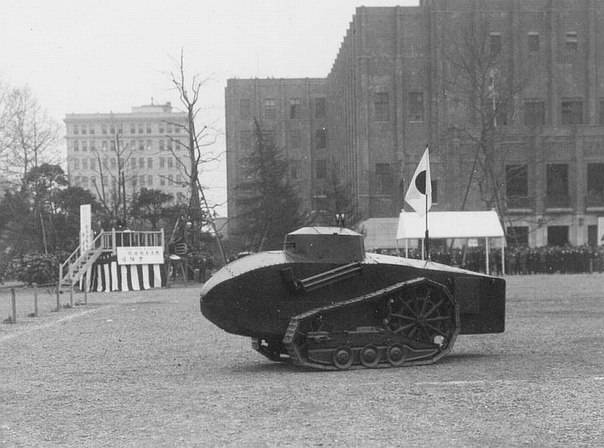
It is interesting that the Nagayama tank was created back in 1929 (here are the backward Japanese for you!) And it showed itself very well during the tests: it maneuvered and even fired a machine gun!
Work was actively carried out on radio-controlled tanks, which were used as T-26 vehicles, in the 30s in the USSR. At that time, many military men believed that the use of chemical weapons in a future war was more than likely. Therefore, on the basis of the T-26, they tried to create, first of all, "chemical tanks" that could spray poisonous substances. Accordingly, remotely controlled "smoke tanks" were intended to set up smoke screens.
But all this equipment did not appear in service with the Red Army. It turned out to be impossible to remotely control fire from a machine gun, all the more pointless it was to shoot from a cannon, but using the T-26 as a carrier of chemical weapons and explosives also turned out to be questionable due to the small thickness of the armor and the large size of this machine, which turned it into a good conspicuous target.
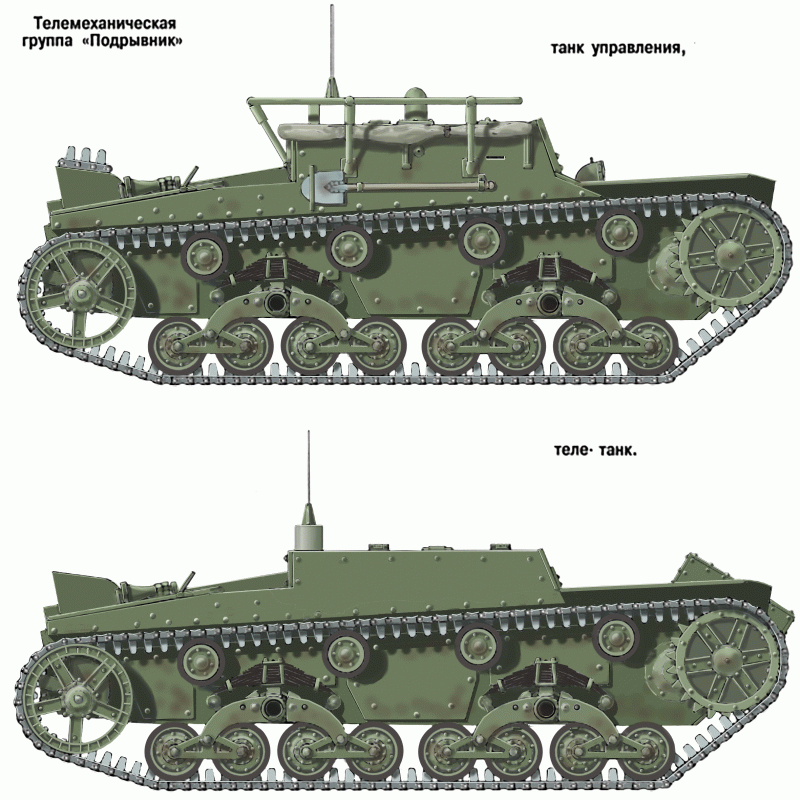
Tanks of the "Demoman" combat group
Interestingly, the T-26-based blasting machines were supposed to be controlled by radio from the command vehicle as part of the Demoman group from several blasting machines and one control vehicle at once.
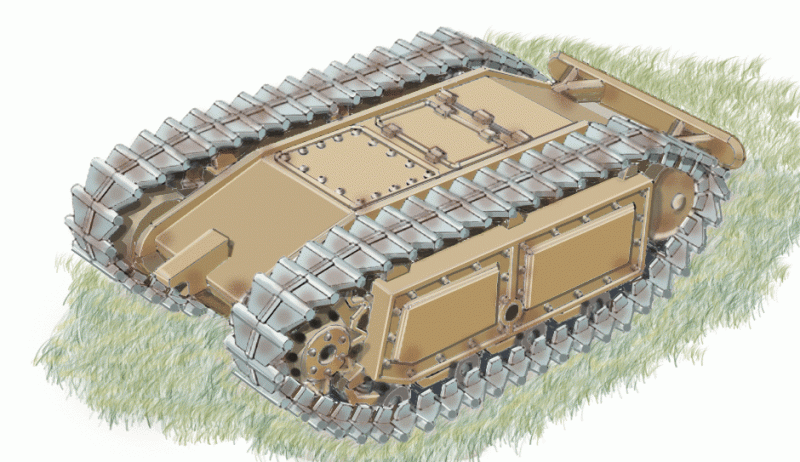
Here it is, "Goliath"
So German engineers were by no means the first to start developing remote-controlled combat vehicles on the eve of World War II.
It is interesting, however, that the Germans, in contrast to the Soviet designers, who focused on the “chemical” and subversive nature of remote-controlled combat vehicles, tried to create multifunctional armored personnel carriers capable of not only delivering explosives to enemy positions, but also conducting reconnaissance and clearing passages in minefields.
With the high level of technology of the German industry, the technical implementation did not take much time. And soon the German army received a ground-based torpedo - Sonder Kraftfahrzeug 302 or Goliath, created by Borgward.
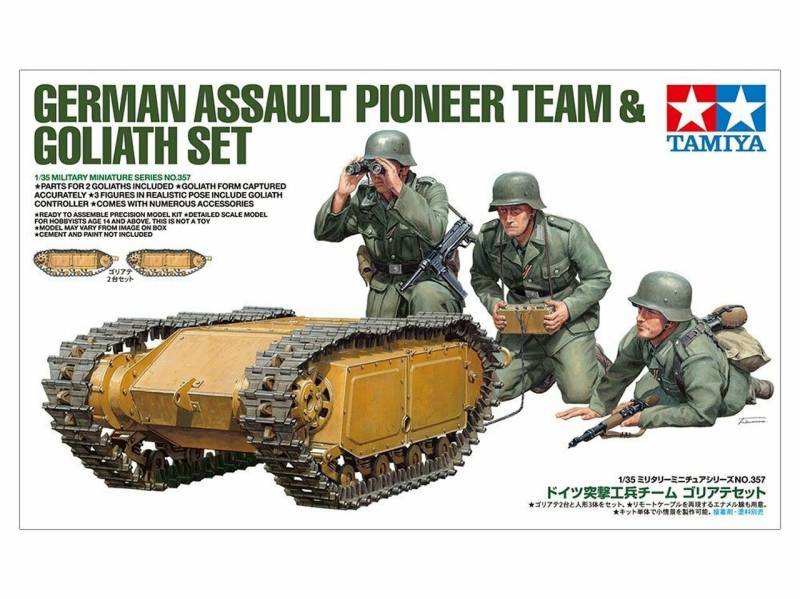
Box with the Goliath model, along with the calculation, which is produced by the Japanese company Tamiya in 1:35 scale
The trophy Engin K from the bottom of the Seine served as a role model for them. It appeared in 1942 and, like Engin K, was controlled by cable, which was not very convenient for the battlefield. Carrying capacity up to 70 kilograms, very low ground clearance (only 16,8 cm for the highest model), low speed up to 11,5 kilometers per hour and, of course, weak armor - all these shortcomings severely limited the use of this combat vehicle.
When driving on uneven terrain, the "land torpedoes" easily strayed off course, or even turned over, and their patency was completely unsatisfactory. In addition, they were vulnerable not only to anti-tank weapons, but also were successfully disabled by conventional small arms.
During the years of World War II, the Germans managed to make 7 Goliaths, spent energy, time, money, materials on them, but in reality a little more than a thousand vehicles were involved in the battles. And they had to recognize it as too expensive and ineffective.
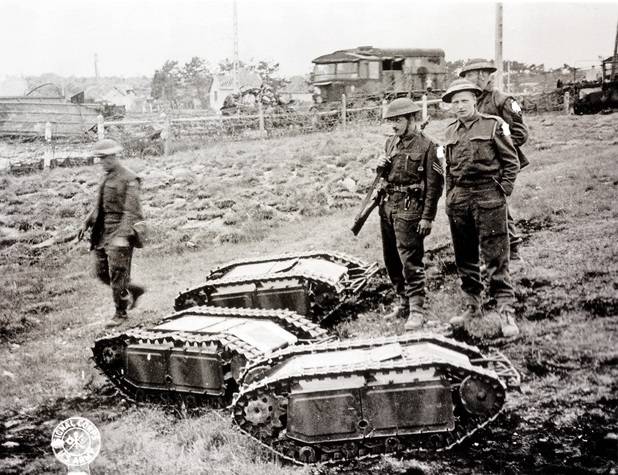
English soldiers near the captured Goliaths
German engineers and torpedo vehicles were created on the basis of captured vehicles: the English Universal Carrier and the Belgian Utility Tractor. They had large dimensions, large carrying capacity, but the control was carried out as before - by cable.
In the summer of 1942, about thirty of these machines were used during the third assault on Sevastopol to undermine Soviet pillboxes. 13 armored personnel carriers were destroyed by fire, 9 were out of order for technical reasons, and only 8 were able to reach their goal. One of them, with the help of a 700-kilogram explosive charge, managed to destroy an artillery pillbox, which had held back the German advance for two days.
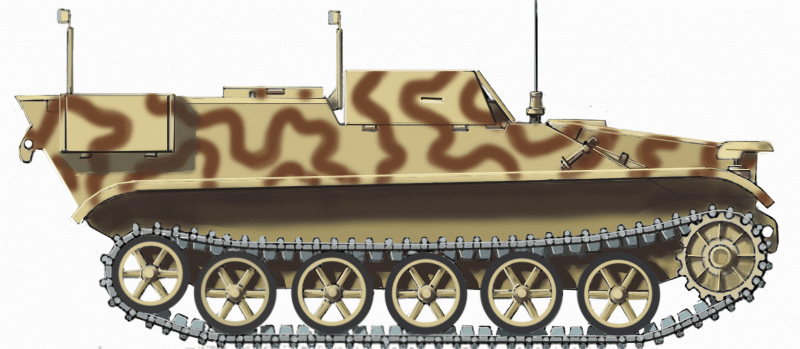
Sd.Kfz.301 (Borgward B IV)
Remote blasting machines were also used on the Kursk Bulge. But ... and there they "did not show themselves." Finally, they were used in Normandy, but even there, just like on the Eastern Front, the enemy quickly revealed all the weaknesses of this technique and began to actively destroy it without much harm to themselves.
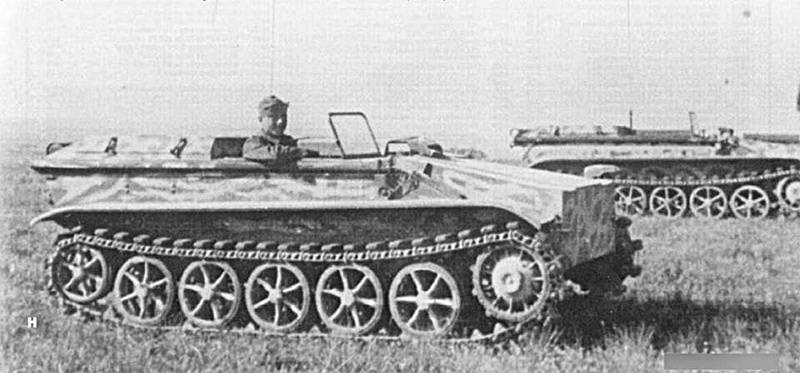
On the march, the B-IV wedge (Sd.Kfz.301) could be driven by the driver. It turned out a kind of light tracked all-terrain vehicle
By the beginning of the spring of 1945, the Wehrmacht had approximately 2 Sd.Kfz.530a vehicles (with electric motors) and 302 vehicles with gasoline engines. That is, just over 3 in total. The rest of the cars were in warehouses.
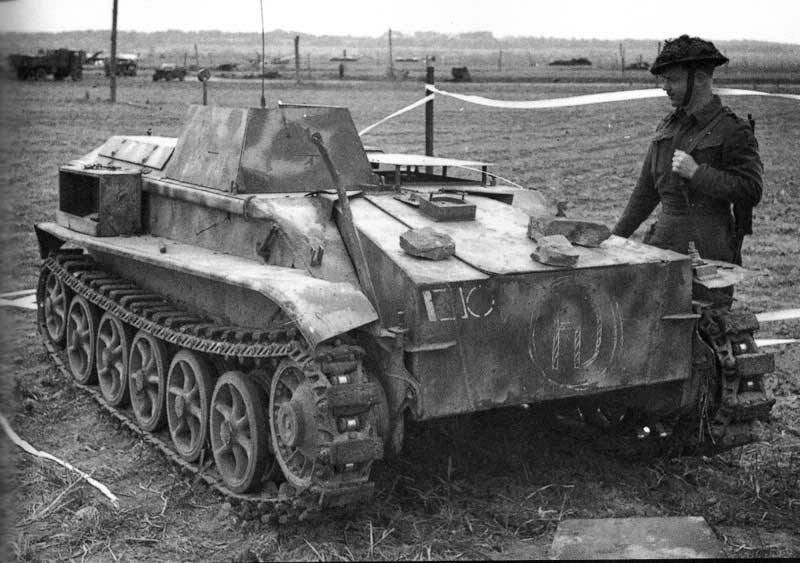
Captured RC tankette B-IV (container with explosives installed on site)
Since 1943, vehicles controlled by radio V-IV (Sd.Kfz.301) appeared in the army tank units of the Wehrmacht. They were controlled by radio from tanks T-III, T-IV, etc. and carried on the hull a drop container with an explosive charge weighing 500 kg.
The machine was intended for blasting and reconnaissance. Later, the range of tasks solved with its help was expanded. It was supposed to be used to degas the area (in the event that the enemy used chemical weapons) and to set up a smoke screen on the battlefield. For this, the appropriate equipment was installed on the machine.
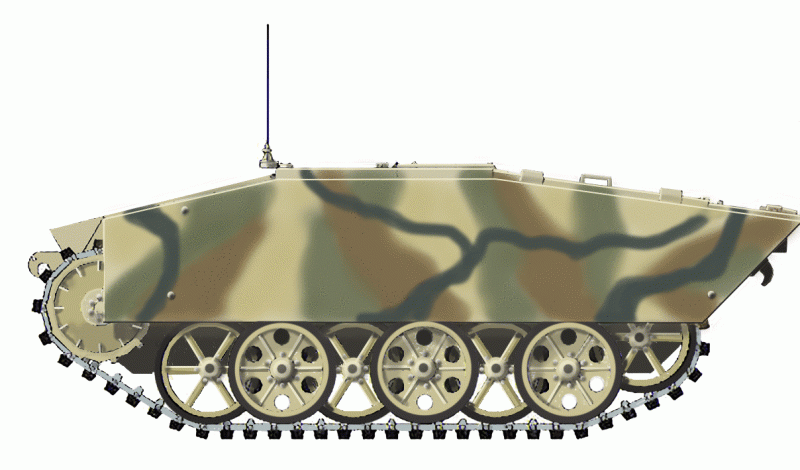
Sd.Kfz. 304 Jumper
The most advanced example of a radio-controlled machine, the SdKfz 304 Jumper, was created at the very end of the war, but also did not play any special role in it.
It is known that in the Red Army explosive tankettes controlled by wires were proposed by the future science fiction writer Alexander Kazantsev. And a certain number of them were created, used in battles, and with their help a certain amount of damage was inflicted on the Nazis. But ... they also did not have a chance to play a big role at the front, their design was very unreliable and vulnerable.
Well, what now? Is it really impossible to create some kind of "special machine" for similar purposes?
Probably you can. But the "cost-effectiveness" criterion tells us that this business is ... unpromising.
We can imagine, say, an armored hovercraft, which will not care about pits or bumps, not to mention mines, with a charge of a couple of tons of explosives, a powerful engine and controlled by a video camera, but how much the combat mechanism will cost us in terms of one soul killed - that is the question!
Color illustrations by A. Sheps.
Information